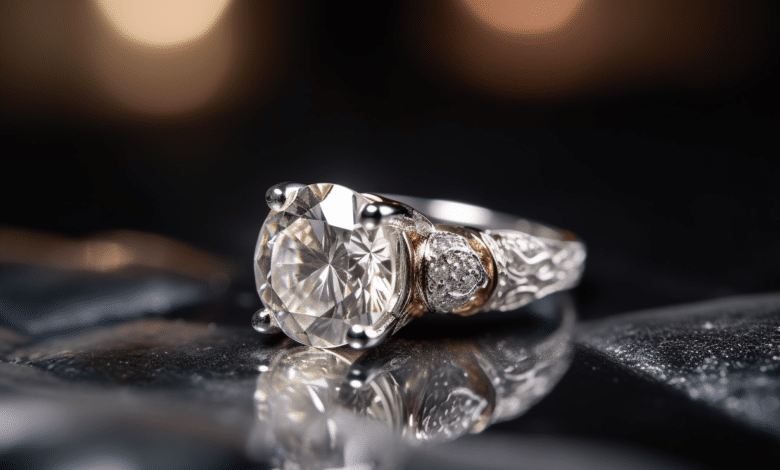5 Critical Factors in Choosing a Diamond for Your Engagement Ring

Choosing the perfect diamond for your engagement ring is an exciting yet daunting task. With so many factors to consider, it’s crucial to have a comprehensive understanding of what truly makes a diamond exceptional. From carat weight to cut proportions, every aspect plays a pivotal role in determining the brilliance and beauty of your forever gemstone. In this comprehensive guide, we’ll delve into the five critical factors that should guide your decision-making process, empowering you to make an informed choice that will set the stage for a lifetime of cherished memories.



1. Mastering the Art of Carat Weight
The carat weight of a diamond is often the first consideration for many couples. While it’s a common misconception that a larger carat weight equates to a more valuable diamond, the truth is far more nuanced. The carat weight should be evaluated in harmony with the other factors, as it’s just one piece of the puzzle.
- Diamonds with a higher carat weight are generally rarer and more valuable, but this isn’t the sole determinant of a diamond’s quality.
- When comparing diamonds of the same carat weight, other factors like cut, color, and clarity can significantly influence the diamond’s appearance and overall beauty.
- It’s essential to strike a balance between carat weight and your budget, while also prioritizing the diamond’s overall beauty and brilliance.
2. Unlocking the Secrets of Diamond Grading
Diamond grading is a crucial aspect that separates truly exceptional diamonds from the rest. This comprehensive evaluation process, performed by accredited gemological laboratories, assesses a diamond’s quality based on the four Cs: cut, color, clarity, and carat weight.
- Cut: The cut of a diamond determines its ability to reflect and refract light, directly impacting its brilliance and fire. A well-cut diamond with optimal proportions will dazzle with its scintillating sparkle.
- Color: While most diamonds appear colorless to the untrained eye, they can range from truly colorless to slightly yellow or brown. The closer a diamond is to being colorless, the rarer and more valuable it is.
- Clarity: Diamonds are evaluated for the presence and visibility of internal inclusions and external blemishes. The fewer inclusions, the higher the clarity grade, and the more valuable the diamond.
Understanding the intricacies of diamond grading is essential for making an informed decision that aligns with your preferences and budget.
3. Maximizing Diamond Light Return
One of the most captivating aspects of a diamond is its ability to reflect and refract light, creating a dazzling display of brilliance and fire. This is achieved through precise cutting and polishing techniques that optimize the diamond’s light performance.
- The cut of a diamond, particularly its proportions and symmetry, plays a crucial role in determining its light return and overall sparkle.
- Well-cut diamonds with optimal proportions will reflect and refract light more efficiently, resulting in a mesmerizing display of brilliance and fire.
- Poorly cut diamonds, on the other hand, may appear dull or lifeless, failing to captivate the eye with their luminous beauty.
By understanding the principles of light performance and prioritizing diamonds with exceptional cuts, you can ensure that your engagement ring will dazzle and delight for a lifetime.
4. Choosing the Ideal Diamond Proportions
Diamond proportions are the precise measurements and ratios that determine a diamond’s overall symmetry and light performance. These intricate details may seem technical, but they play a crucial role in ensuring that your diamond radiates with unparalleled beauty.
- The depth percentage, table percentage, and crown and pavilion angles are essential proportions that must be carefully balanced for optimal light performance.
- Diamonds with well-balanced proportions will exhibit maximum brilliance, fire, and scintillation, creating a breathtaking display of light and sparkle.
- Poorly proportioned diamonds may appear dull or dark, failing to live up to their true potential for brilliance.
By prioritizing diamonds with ideal proportions, you can ensure that your engagement ring will captivate and enchant, reflecting the depth of your love and commitment.
5. Considering Ethical and Environmental Factors
In today’s conscious world, it’s essential to consider the ethical and environmental implications of your diamond purchase. Responsible sourcing and sustainable practices have become paramount in the jewelry industry, reflecting the values and principles of modern society.
- Look for diamonds that are certified by reputable organizations, such as the Kimberley Process Certification Scheme, which ensures that the diamonds are conflict-free.
- Consider lab-grown diamonds as an ethical and eco-friendly alternative to mined diamonds, without compromising on quality or beauty.
- Support jewelers and brands that prioritize ethical sourcing, fair labor practices, and environmental sustainability in their operations.
By making conscious choices and aligning your diamond purchase with your values, you can celebrate your love while contributing to a more responsible and sustainable future for the jewelry industry.
Choosing the perfect diamond for your engagement ring is a journey that requires thoughtful consideration and a deep understanding of the factors that truly make a diamond exceptional. By mastering the art of carat weight, diamond grading, light return, proportions, and ethical considerations, you can ensure that your diamond will not only dazzle with its brilliant beauty but also reflect the depth of your love and commitment. Embrace this journey with knowledge and confidence, and let your engagement ring be a timeless symbol of your enduring love story.












